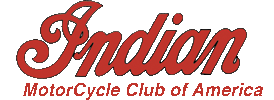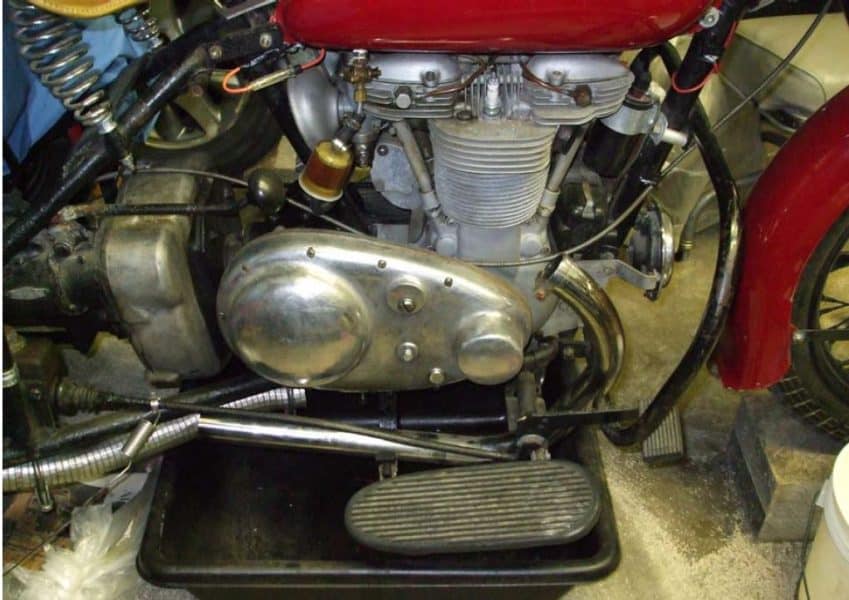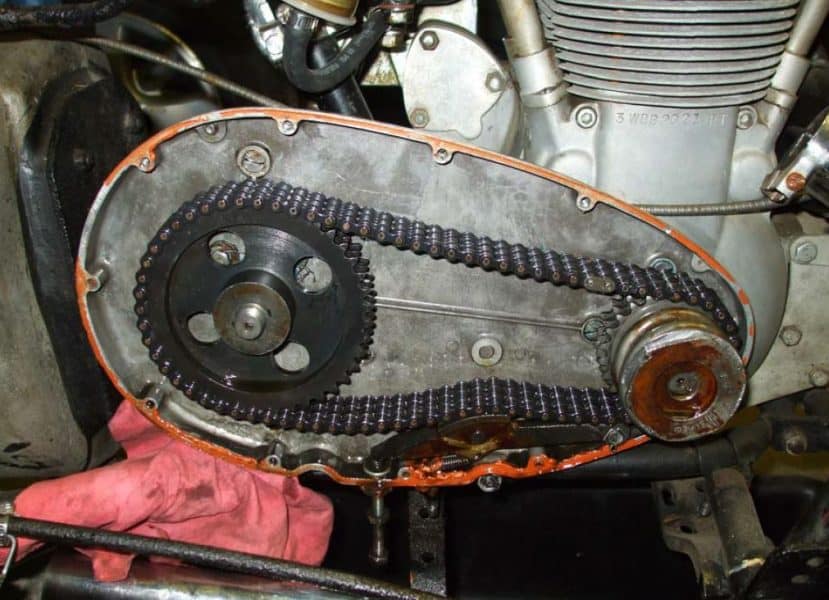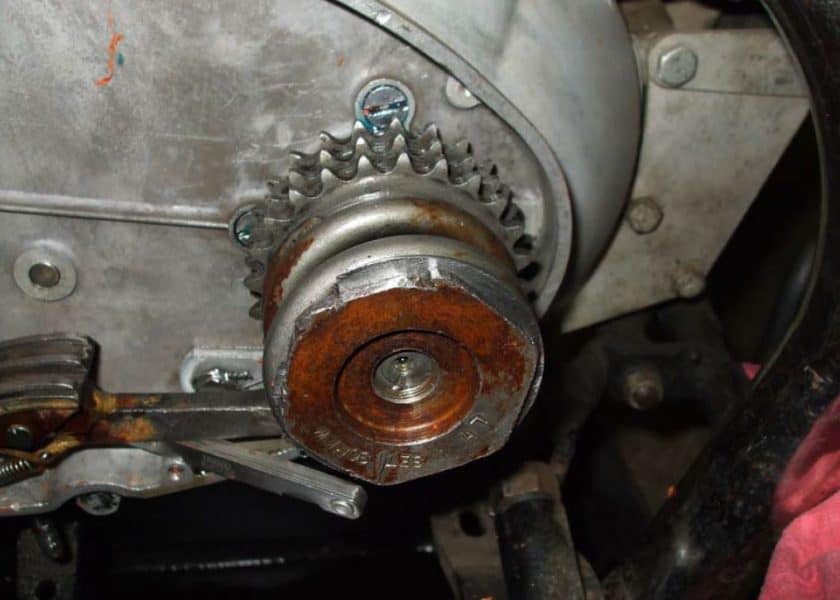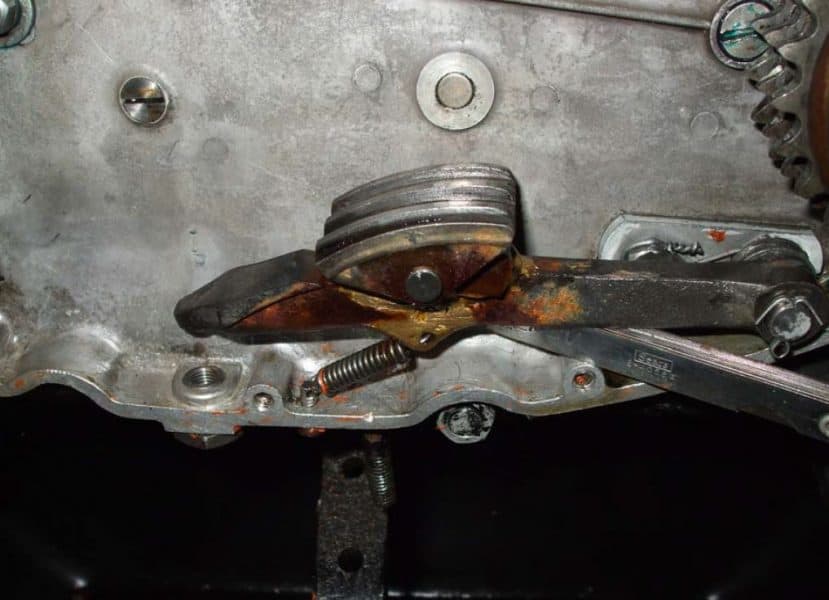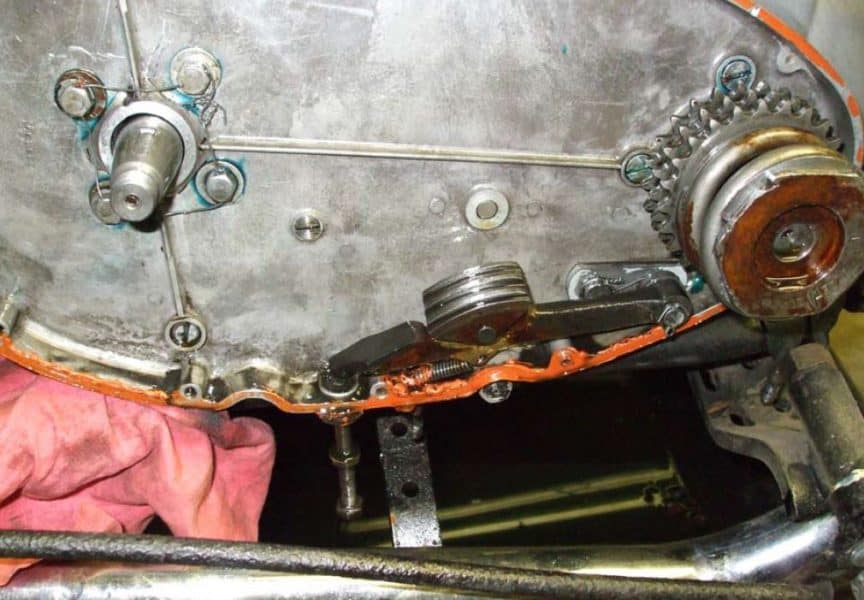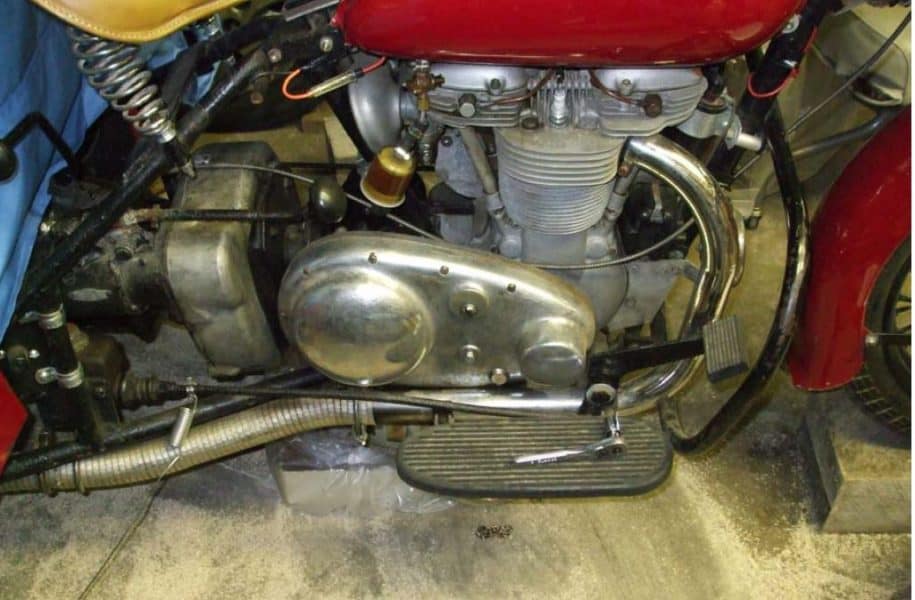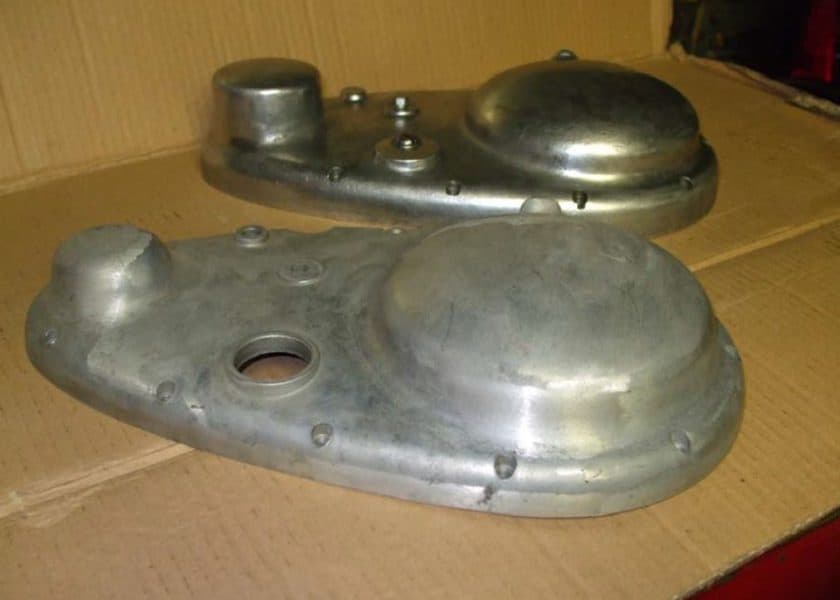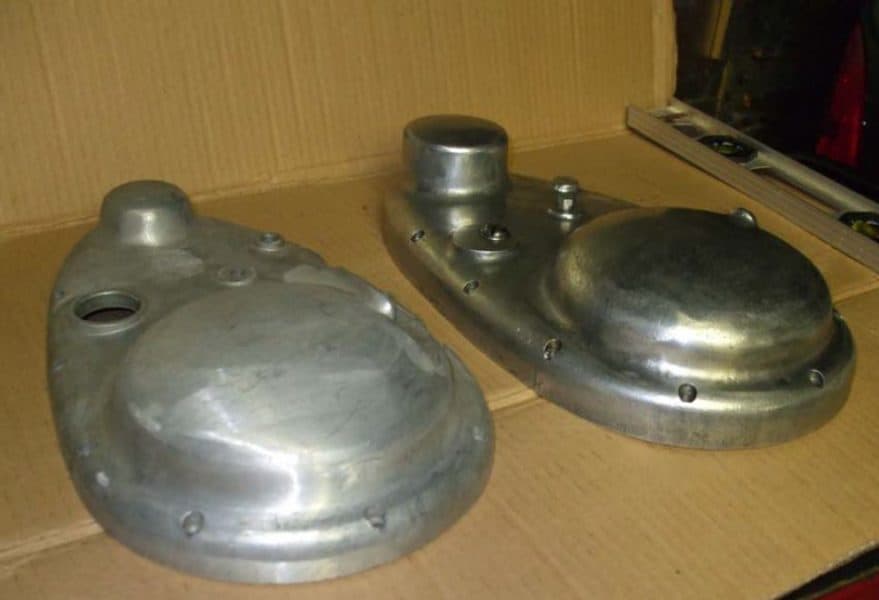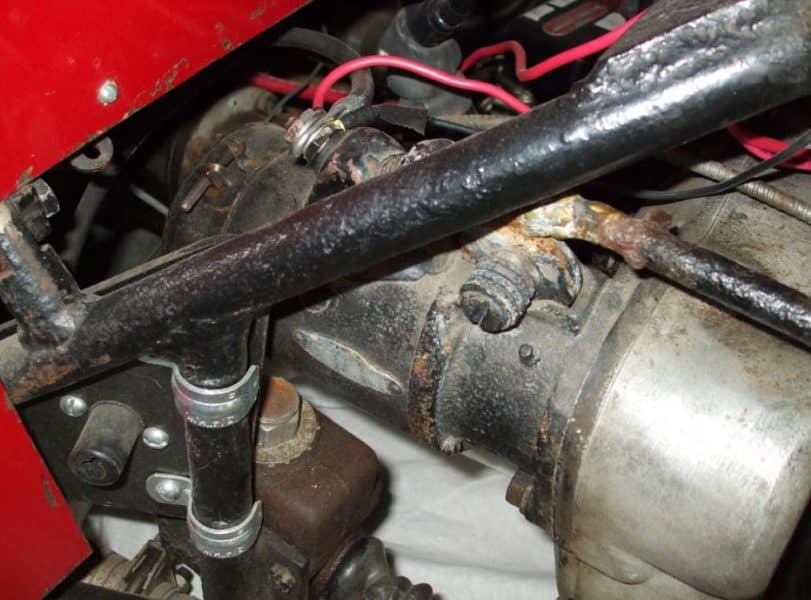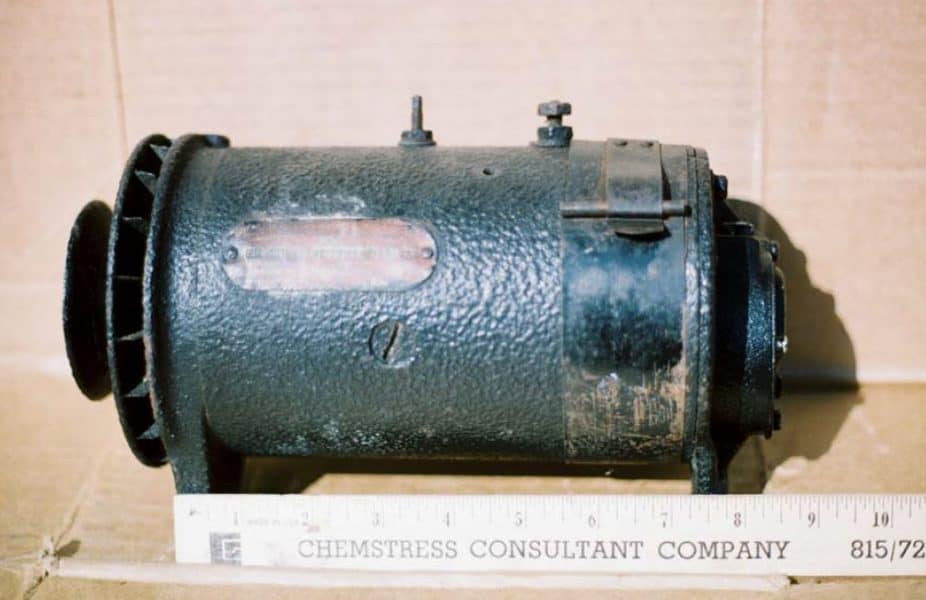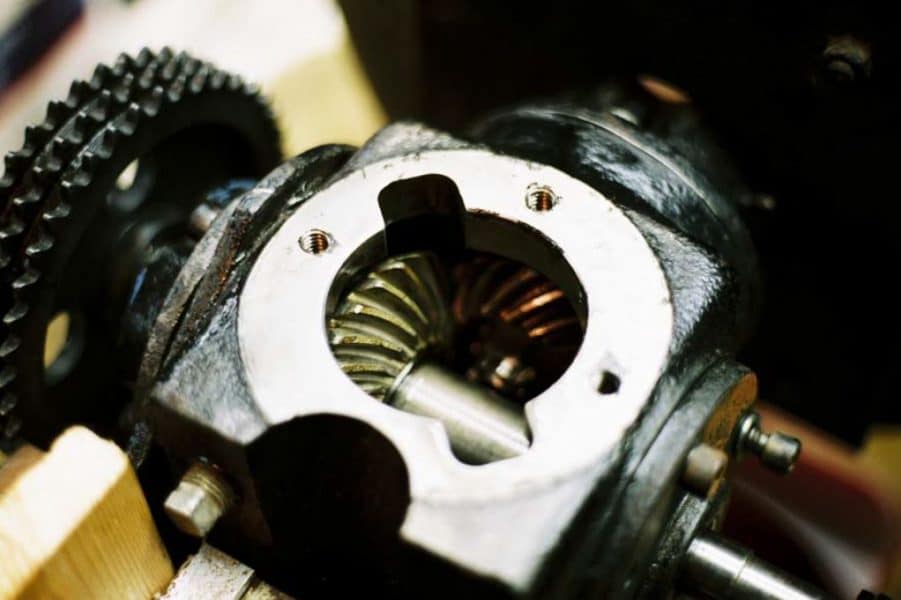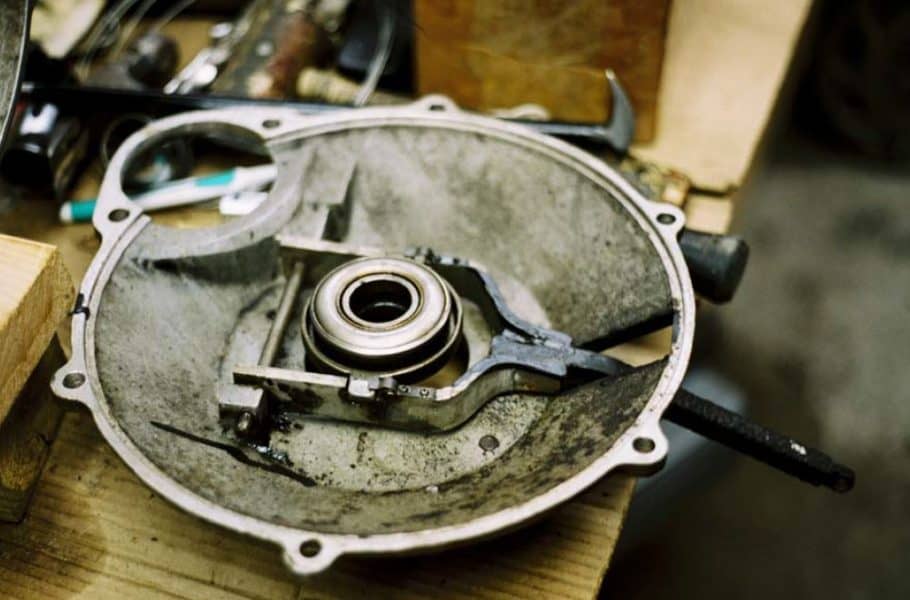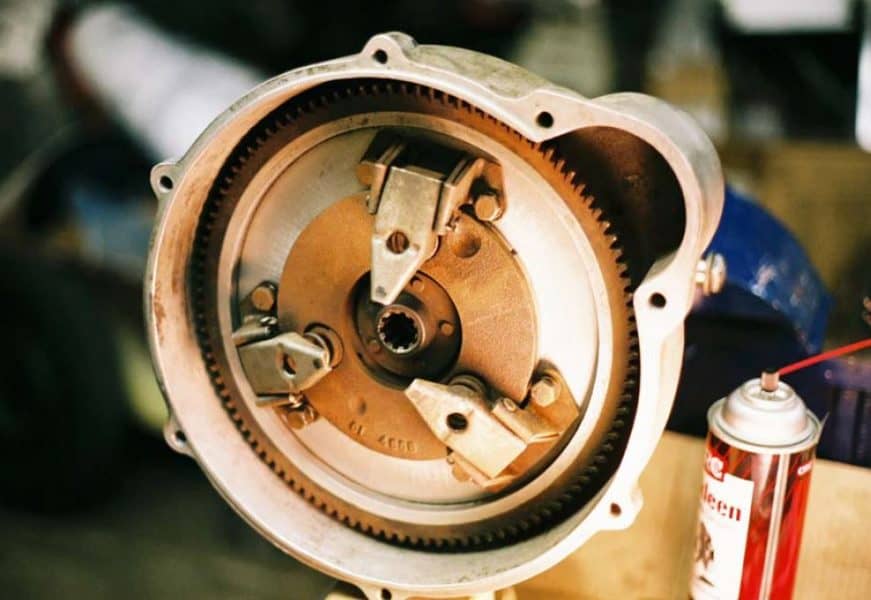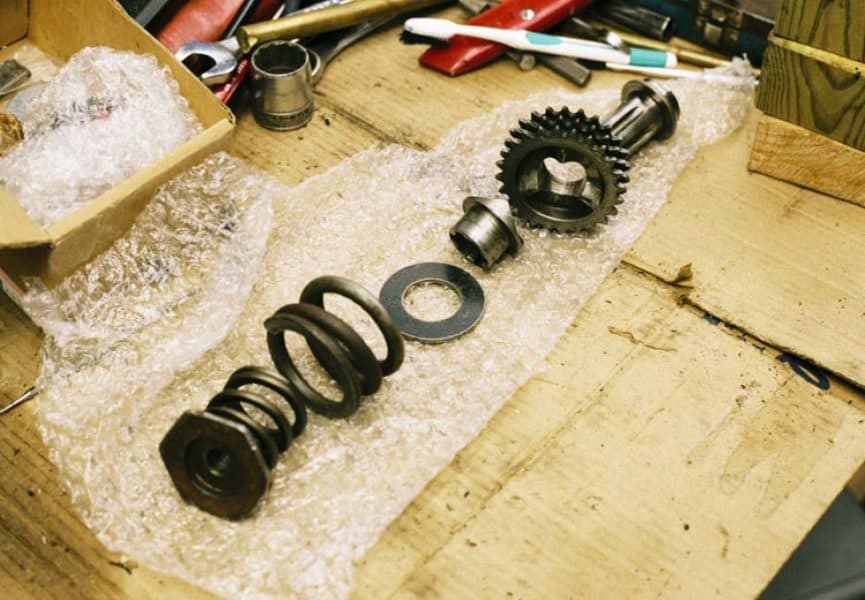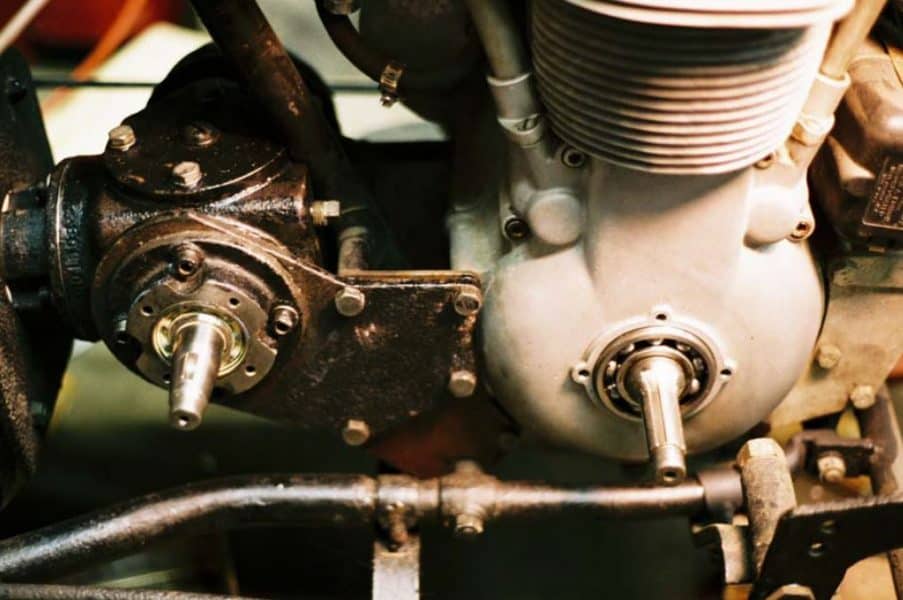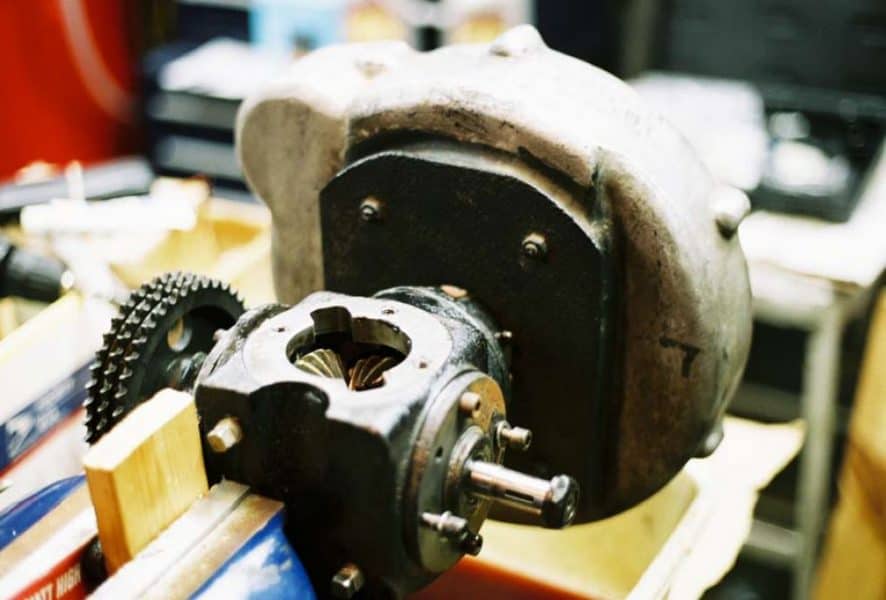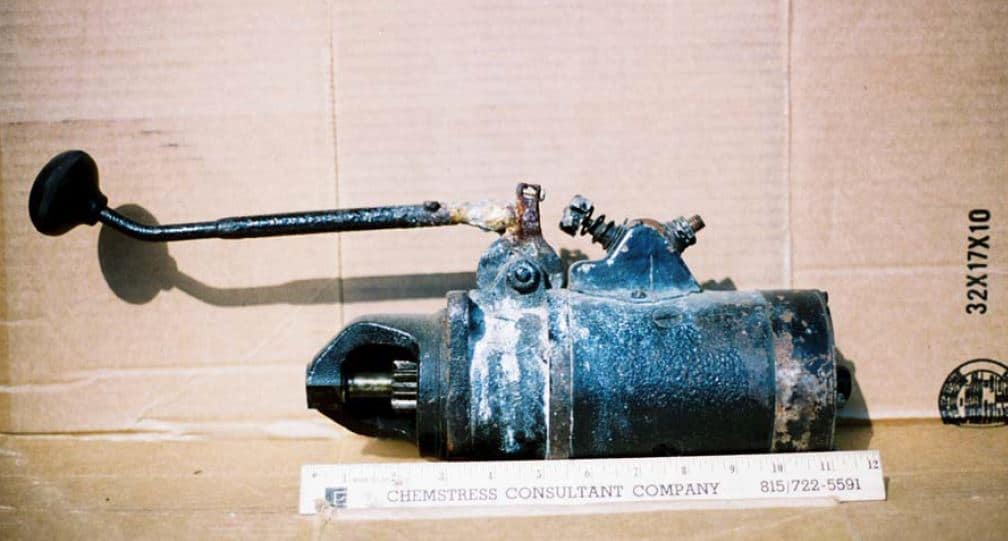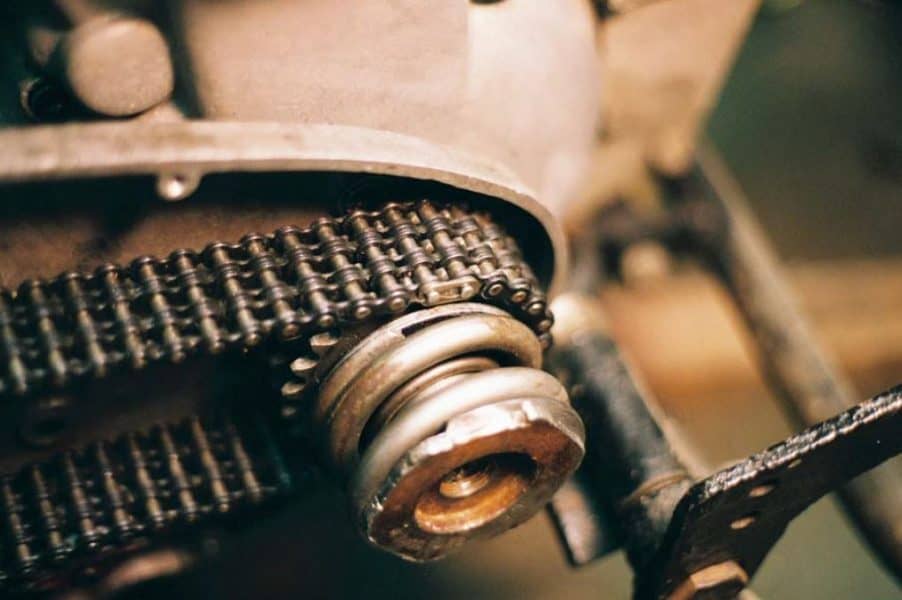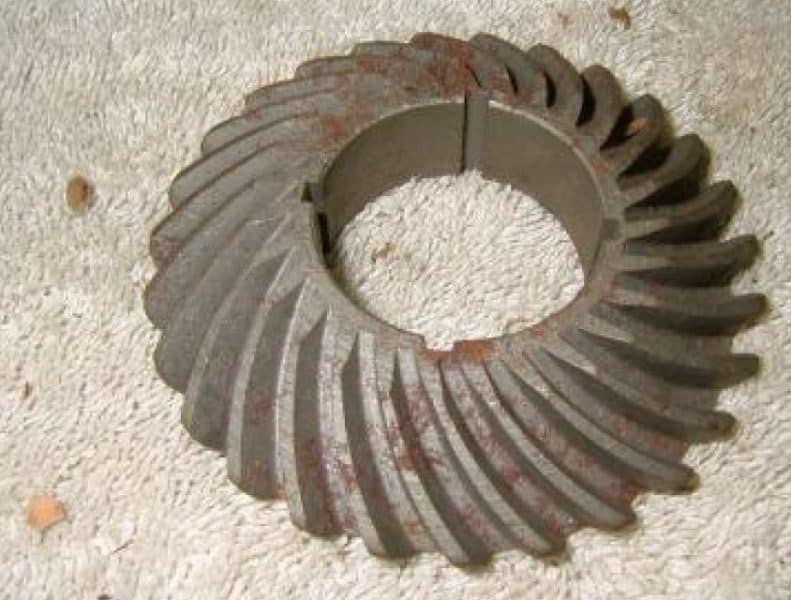Indian 3 Wheel Patrol Vehicles
by Wayne Lensu

The Indian Patrol was made in Springfield Mass in 1952 & 53. Less than 50 were made and approx 7 remain in nearly complete original condition. I have met most of the other Indian Patrol survivor owners at AMCA meets, except for one that I’ve spoken to, who is in Montana. I don’t think the Patrol’s were referred to as Dispatch Tow’s as they had the vertical Warrior 2 cylinder 500cc / 30.50″ engines rather than the V type 45″ or 74″ engine used in the Dispatch Tows. If anyone could clarify this I would appreciate it.
The Indian Springfield Patrol is direct shaft drive to the rear axle, not a chain drive, and should not be confused with the 1959 Indian Patrol Car’s, which were British built Pashleys. After the Indian name was put on the gas tanks, Pashleys were imported for sale through surviving dealerships as Indians. The Pashleys have a 350cc or 500cc single cylinder Royal Enfield engine like the Bullet and were chain drive. I have seen these English Indians at the Wauseon, Oley and Eustis, AMCA meets.
Indian Springfield Patrols, 841’s, and the 2 prototype experimental Fours are the only shaft drive Indians ever manufactured.
There is a Patrol illustration on page 17 of Bob Stark’s Catalog (shown below) and I drive mine to Bob Stark’s spot each year at Davenport to talk with him. Most bike fans have not seen one of these running in 30 years or more. I first had mine drivable at Oley in 2008 and also rode quite a bit at the Rhinebeck National meet. I had the Patrol at Wauseon that year but could not start or drive it because of a sheared woodruff key in the primary drive, which I was able to repair in time for Davenport. The woodruff key in the primary drive has to be the weakest link in this drive train.
I drove a Patrol in 1958 in Far Rockaway, NY and when I saw this Patrol listed on Ebay in 2003, I had to get it. Bob Shingler told me he had put this Patrol together from Ann Arbor, Mich. Police storage yard parts, then it went to Pete Bollenback for his museum, then to an owner in Louisiana who listed it on Ebay. The Patrols are complicated to work on and every repair involves figuring out what off of the shelf or then available parts Indian used to create this mechanical nightmare. When I work on mine, I often stop to wonder how desperate Indian was to have a machine to compete with HD Servicars. I’ve been told that HD dealers offered handsome trade in prices to get the Patrols off the road and then scrapped them, saving only the engines. You may have heard of the six V-twin,Scout 45 cubic inch engined Dispatch Tows made in 1951, I know several of these owners and those 6 with the less than 50 Patrols represent all of Indians 3 wheel production after 1942.
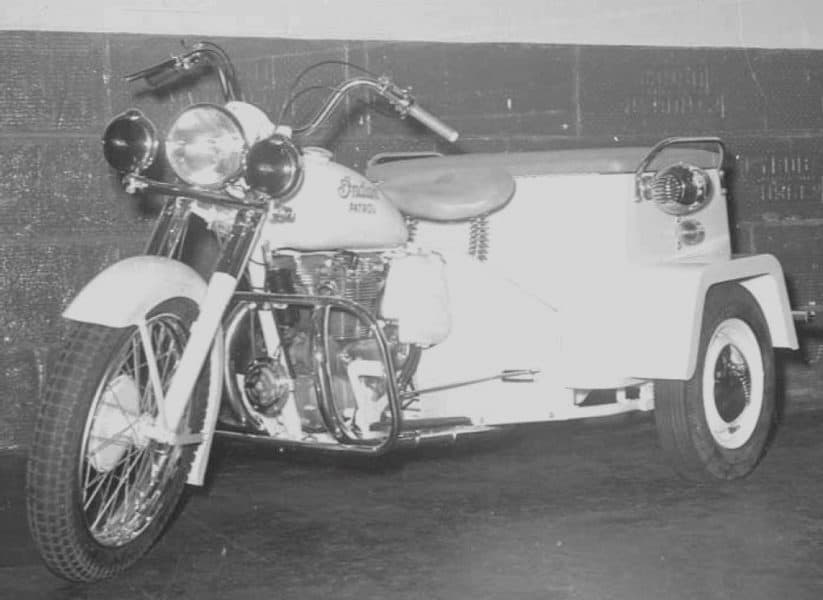
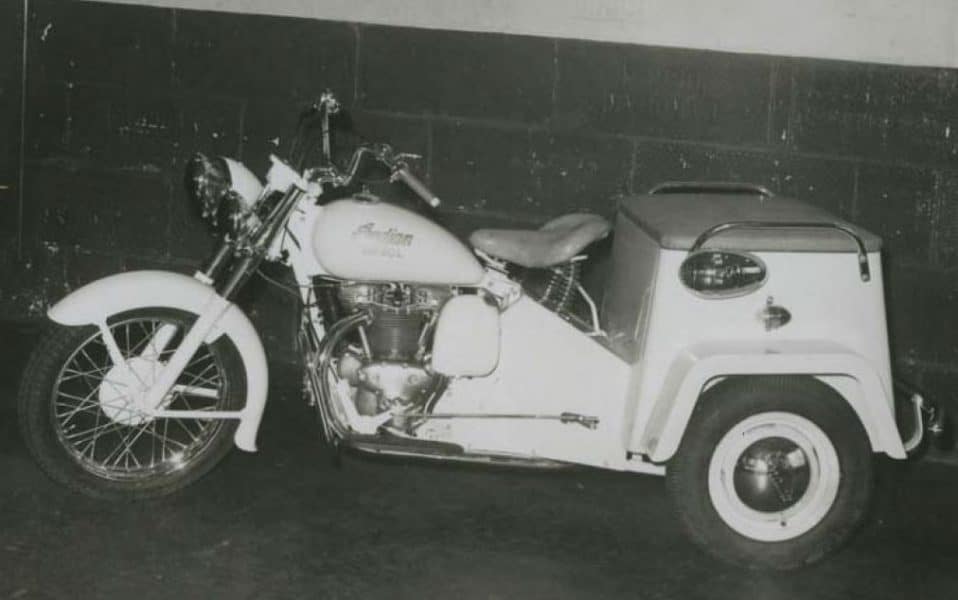
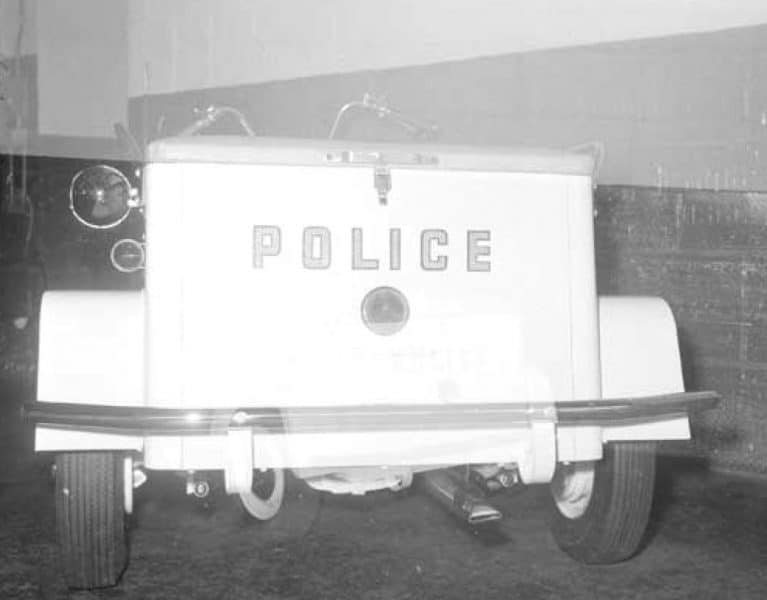
Indian Patrols are a 500cc Warrior from the seat post forward, the primary cases are unique and made for the combination 80″ Chief and 249 compensator using a 3 row sport scout chain. The chain tensioner foot was made up to fit the wider primary cases which also have a larger pocket for the chief size compensator. There is no clutch, just a 3 row sprocket which drives through a Boston Gear angle drive box using Indian 4 cylinder gears. That box was modified to fit around the seat post. The bell housing is stamped 102-S and the flywheel housing is stamped 103-S. They are from some unknown brand, (which I would sure like to identify), using a Crosley clutch, mystery aluminum flywheel, Crosley T92 trans and rear end with 1952 Studebaker Champion hydraulic brakes. The only electric start Indians were the 1952 -53 Patrols and the 1914 Hendee Special. The only Indian shaft drive models are the 841’s, Patrols and the 2 experimental Four cylinders.
Besides the 1914 Hendee Special, this is the only other, from the “factory”, electric start Indian that was made and is “only electric start”, no kicker at all. It has a car type electric starter using a large 6 volt group 1 car battery. The Patrol also has hydraulic brakes like the six rare Scout 45” V-twin 1951 Dispatch Tows that Indian put together in 1951, which are kick start only. After 1942 Indian didn’t have any 3 wheelers to compete with HD’s Servi-Cars until they started making these models in 1951 – 1953
Maintenance is difficult because of the way these were put together, plus there are no Patrol repair manuals and little information available. It took me 2 years to discover the gears I needed for the Boston Gear angle drive box, were standard Indian Four cylinder spiral bevel gears, which drive the car type flywheel and single plate Crosley clutch. I am still debugging this machine, getting everything operational and not concerned with cosmetic restoration yet.
When I got this bike there were two non-consecutive teeth missing from the large gear in the angle drive box. Because they were spiral bevel gears some teeth always seemed to be engaging. After a two year search I found the gear I needed on Rocky and Toney’s table at Davenport. Toney said it was the large gear from the Indian four cylinder 18×27 tooth pair. My guess is that those who tried to get this running before I was able to, failed when each time the gears would lock up, the flywheel would stop causing the woodruff key in the primary to shear. Since this was only an electric start machine the key had to be replaced for each try.
Someone in the past had also left the spring to cam thrust washer out of the torque compensator assembly, so that only the small weak spring was pressing against the sliding cam. The large Chief spring was pressing against the sprocket itself and lifting the primary chain off of the teeth. This cam setup will not travel over center or ratchet, but the back and forth hammering from just the weak spring pressure was also beating on the key.
After installing the new gear, correcting the compensator problems and chamfering the flywheel pilot bearing counterbore so that the inner race was free to turn, everything looked good.
I cleaned the gas tank which was loaded with paint overspray, rust and some kind of dark gray sealer, thoroughly cleaned the Amal carb and was finally able to keep the engine running for more than two minutes.
The magneto cam advance weights were also sticking, causing a second engine start with fully advanced timing. When advanced this would kick back also hammering that poor woodruff key. I replaced the magneto with a distributor so that starting and timing are now much easier.
The shift mechanism is another ongoing problem that needs some modification work.
My Patrol was in an article in the Perkiomen Chapter newsletter in Sept. 2008, Walneck’s Classic Cycle Trader for Sept 2009 and also in Steve Blankard’s last column in the AMCA Quarterly a year ago. I think that was the winter 2009 issue.
I have displayed my Patrol at; Oley in 2008, Davenport 2008, the Rhinebeck Timeline in 2010 and the 2010 Davenport Vertical Models Lineup and drive it as much as possible at swap meets.
Here’s a list of some of the unique Patrol parts.
Handlebars – are 7/8″ with a collar welded on for the left hand 1″ throttle.
Front wheel – is laced with a stronger 741 rim.
Torque compensator – is a combination of 80″ chief and 249 scout. The chief type hex nut is a left hand thread and uses a hidden, under the spring, set screw instead of a lock nut. If the set screw is not backed out, the quill threads are stripped off when removing the nut making reassembly difficult.
Primary cases – are wider for the three row chain and have one less screw where the large compensator hub was added. The chain tensioner foot was made up for the three row chain.
Boston gear angle drive box – was milled out to clear the seat post, the typical mounting flanges were cut off and slots were cut for the large gear to be put inside. Indian used standard bearings and seals, but made the shafts to use the four cylinder 18×27 gear set.I ground off a few interior webs, drilled and tapped a few jack screw holes in the left side cover to make future disassembly easier.
Flywheel housing – is stamped 103-S, but has to be from some available engine as Indian made up a 1/4″ steel plate to use it. I WOULD SURE LIKE TO KNOW WHAT IT IS FROM.
Bell housing – is stamped 102-S, After watching Ebay for years one of these finally showed up and I haven’t a clue what it was used on. IF YOU KNOW PLEASE TELL ME
Flywheel – is an aluminum casting or forging that must have been an available part. It uses four mounting bolts, while Crosley only used three. If Indian made this up themself, I would expect something fully machined from flat stock with no obvious grain or surface roughness. IF ANYONE CAN IDENTIFY THIS PART – I WOULD SURE LIKE TO KNOW.
Starter – is CCW drive and was made especially by Auto-Lite for Indian Patrols.
Generator – is also CCW rotation and came from a Galion road grader.
Trans & Rear – Crosley – with a short aluminum casting instead of the long torque tube.
Rear brakes – hydraulic 1952 Studebaker Champion
It is easy to see where repairing these Patrols became impractical, leaving them abandoned like the bunch of parts Bob Shingler found in the Michigan Police yard. Bob put the one together that I own now. Luckily I was able to spend several hours listening to him at Davenport. Bob also had an awesome collection of literature and early Patrol magazine ads that I hope have been saved.
If anyone has any old pictures or information about these rare 3 wheelers I would be glad to contribute toward document copying costs.
There was some interesting dialogue on the Virtual Indian website pertaining to an Indian Warrior based Dispatch Tow that showed up a few years ago at the Pennsylvania flea market for Das Awkscht Fescht. This same un-restored machine is in the Oley picture attached to this article. This un-restored bike was the very same Patrol that Jim Garrett owned and drove as a 17 year old, he bought it back and he is restoring it now.
The first picture attached is me, Wayne Lensu, at Davenport in 2008 with my drivable 1952 Patrol. The other pictures show some of these unique parts used assembling the Patrols.
